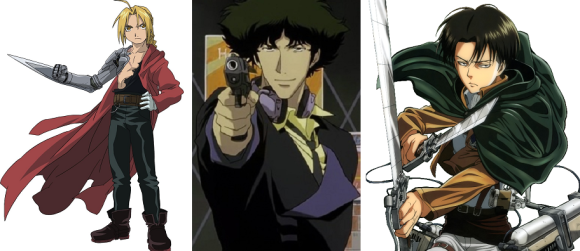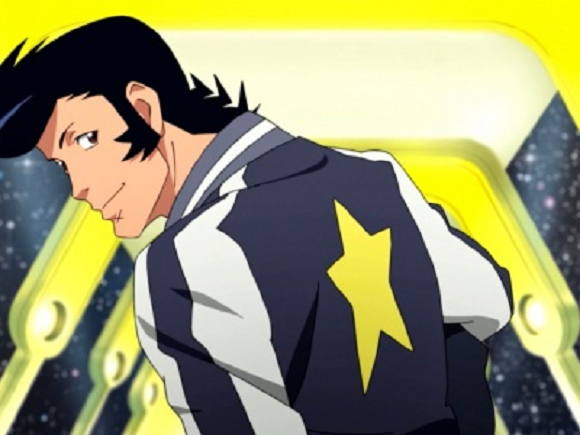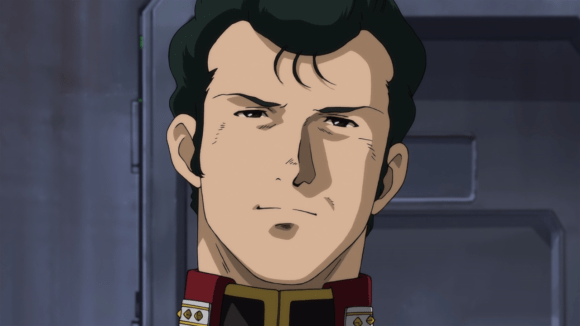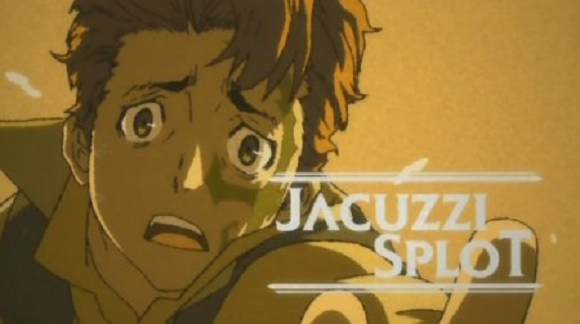
There are a lot of things that surprise newcomers to anime. Why are the characters’ eyes so big? How come everyone has funky hair colors? What’s up with all the panty shots?
A lot of those have simple answers. The giant eyes are an influence from legendary manga artist Osamu Tezuka, who was in turn inspired by classic Disney designs. Anime artwork uses a relatively small number of lines in drawing faces, and a large palette of hair colors is a quick and easy way to differentiate otherwise similar-looking characters. Male anime fans in Japan are extraordinarily open about their love of undies.
With those questions out of the way, let’s take a look at something a bit less cut-and-dried: Why are there so many anime characters with non-Japanese names?
For those not used to it, it can be a little startling to sit down to watch cartoons from Japan, only to find the hero is named Ed, Spike, or Eren. In a case of things coming full circle, anime enthusiasts in Japan have started to become aware of the fact that foreign fans are puzzled over how many major figures in Japanese animation have Western-sounding names. Website Byokan Sunday culled the following theories put forth by Japanese Internet users.
1. It makes it easier for the show to become popular overseas
Overseas revenue sources, whether through home video sales or broadcast and streaming license fees, are becoming increasingly important to Japanese content creators. Of course, it’s hard to get people to remember to buy your DVDs when they can’t remember the main character’s name, and the logic behind this explanation goes that avoiding Japanese names makes them easier for foreign fans to remember.
While that reasoning definitely has some plausibility, Naruto, Bleach, and Puella Magi Madoka Magica each went on to international success despite the monikers of protagonists Naruto Uzumaki, Ichigo Kurosaki, and Madoka Kaname, who have unusual names even by Japanese standards. In light of that, we’re not sure how big a role overseas sales potential plays in naming anime leads.
2. The character was originally inspired by a Westerner
This likely had a bigger impact during the golden era of the Hollywood action blockbuster, but the fact remains that mainstream Japan consumes far more Western movies and TV programs than vice-versa. With people accustomed to seeing non-Japanese action heroes and on-screen adventurers, some just don’t feel a need to make their anime leads the same ethnicity as the core audience.
The pool of foreign acting talent in Japan may not be large enough for live-action producers to fill their works with surrogates for their favorite international stars, but anime is a different story. Sometimes the homage goes beyond their physical appearance, and the creator may even give the character part of the original inspiration’s name as a tip of the hat.
3. The creator doesn’t want to designate an ethnic background for the character
While giving a character a set ethnicity can help flesh out their back story, that same informational tidbit can also backfire and become a distraction if it’s incorrectly or inadequately portrayed. On the other hand, picking a name that’s not only not Japanese, but doesn’t seem to indicate any nationality at all, leaves all storytelling options open.
For example, Space Dandy’s Dandy (who is a dandy, in space) has the pompadour, jacket, and slouch of a Japanese rogue, which means if the director wants him to spend a whole episode wearing a traditional fundoshi loincloth or searching for an inter-dimensional ramen joint, he can. But if in a different episode he wants Dandy to spoof High School Musical and attend an American-style prom, he can do that too, all without having to take time out to worry about how a Japanese character’s sensibilities would make him react in that culturally unfamiliar situation. By giving the character a name with no real ethnicity, he can be whatever the script needs him to be at any time.
4. Using a Japanese name makes the world seem too realistic
Between the lack of extra costs for building sets and the relatively young age of the audience, a lot of anime falls into the fantasy and science fiction genres. To some creators, though, the escapist fun and drama would be spoiled by giving the characters Japanese names, which, being what the primary Japanese audience is most familiar with, seem the most immediately real.
Say you’re making a space opera, and aren’t trying to directly connect it to any historical political or military conflicts on Earth. That becomes harder to do if you name the captain of your space carrier Takeru Yamada. In this anime’s world, did Japan revise its constitution so that it would have an active military again? What sort of societal conditions brought that about, and what were the repercussions? Those sort of questions might be difficult for Japanese viewers to ignore, and have the potential to overshadow the story the director is actually trying to tell.
On the other hand, name the captain Bright Noa, like in the original Mobile Suit Gundam, and you can shift the focus back to the here and now of giant robot warfare.
Likewise, most anime fantasy settings have a distinctly European flavor to them. Name your swordsman Yoshihiko, and people will be thinking about if this world has an equivalent to Japan. If so, why did Yoshihiko leave his homeland? What caused him to get rid of his samurai lamellar and buy a suit of Western-style plate mail? If you don’t want the narrative to get bogged down dealing with all that, why not just sidestep the whole issue by naming him Gourry?
▼ Problem solved (now get cracking on a new season of Slayers, please).
Which leads us to the question, have you ever met someone named Bright or Gourry? In creating a deliberate break from reality, often the names used in anime don’t exist in any culture. Magic Knight Rayearth named most of its cast after cars. Knights of Ramune did the same thing with beverages.
Sometimes, this even sends a clear message of what to expect. The 2007 TV series Baccano largely takes place in the seemingly ordinary confines of 1930s New York, but one of your first clues about the supernatural events that lie ahead comes while the cast of characters’ names appear during the opening animation, and you see this.
Seriously, any time you’re watching a show and a guy named Jacuzzi Splot shows up, you know things are about to get weird.
Source: Byokan Sunday
Top image: Comic Vine, My Anime List, Get Cartoon Wallpaper
Insert images: Wikia, Get Cartoon Wallpaper (2), WordPress, HD Wallpapers, Wikia (2, 3), Planet Minecraft






 Why do Chinese characters in anime say -arimasu/-aru ALL the time?
Why do Chinese characters in anime say -arimasu/-aru ALL the time? Bloodbath: Why Do So Many Anime Characters Have Nosebleeds When They’re Aroused?
Bloodbath: Why Do So Many Anime Characters Have Nosebleeds When They’re Aroused? Which anime characters do you share a birthday with? This website will tell you
Which anime characters do you share a birthday with? This website will tell you Why are there different counters for animals and people in Japanese?
Why are there different counters for animals and people in Japanese? Cyberpunk anime meets traditional culture in Ghost in the Shell gold leaf Japanese changing screens
Cyberpunk anime meets traditional culture in Ghost in the Shell gold leaf Japanese changing screens Hello Kitty Choco Egg figures are an adorable trip through three periods of Japanese pop culture【Pics】
Hello Kitty Choco Egg figures are an adorable trip through three periods of Japanese pop culture【Pics】 Japan’s otoshidama tradition of giving kids money at New Year’s gets a social welfare upgrade
Japan’s otoshidama tradition of giving kids money at New Year’s gets a social welfare upgrade 7-Eleven Japan’s ramen-cooking robot whipped us up a bowl of noodles【Taste test】
7-Eleven Japan’s ramen-cooking robot whipped us up a bowl of noodles【Taste test】 Toy guns won from crane games all over Japan could be used as real guns, warn police
Toy guns won from crane games all over Japan could be used as real guns, warn police Scientific study from Japan proves ninja hand gestures sharpen the mind and reduce stress
Scientific study from Japan proves ninja hand gestures sharpen the mind and reduce stress Stamina-destroying “Paralysis Noodles” are Tokyo’s newest over-the-top ramen innovation
Stamina-destroying “Paralysis Noodles” are Tokyo’s newest over-the-top ramen innovation Lacquerware supplier to emperor of Japan and Pokémon team up for new tableware
Lacquerware supplier to emperor of Japan and Pokémon team up for new tableware Pokémon doughnuts appear at Mister Donut, with all-new Pikachu and Foongus
Pokémon doughnuts appear at Mister Donut, with all-new Pikachu and Foongus We tackle a titanic bowl of pork cutlet katsudon and (just about) live to tell the tale
We tackle a titanic bowl of pork cutlet katsudon and (just about) live to tell the tale Disillusionment at Tsukiji’s tourist-target prices led us to a great ramen restaurant in Tokyo
Disillusionment at Tsukiji’s tourist-target prices led us to a great ramen restaurant in Tokyo Japan may add Japanese language proficiency, lifestyle classes to permanent foreign resident requirements
Japan may add Japanese language proficiency, lifestyle classes to permanent foreign resident requirements Starbucks Japan releases new zodiac chilled cup drink for 2026
Starbucks Japan releases new zodiac chilled cup drink for 2026 7-Eleven Japan starts new temporary luggage storage service in over 300 branches
7-Eleven Japan starts new temporary luggage storage service in over 300 branches Starbucks on a Shinkansen bullet train platform: 6 tips for using the automated store in Japan
Starbucks on a Shinkansen bullet train platform: 6 tips for using the automated store in Japan Large amount of supposed human organs left in Osaka marketplace
Large amount of supposed human organs left in Osaka marketplace A Japanese dating app matched our bachelorette with a Buddhist monk, and she learned some things
A Japanese dating app matched our bachelorette with a Buddhist monk, and she learned some things Japan’s human washing machines will go on sale to general public, demos to be held in Tokyo
Japan’s human washing machines will go on sale to general public, demos to be held in Tokyo Japanese train company is letting fans buy its actual ticket gates for their homes
Japanese train company is letting fans buy its actual ticket gates for their homes Starbucks teams up with 166-year-old Kyoto doll maker for Year of the Horse decorations【Photos】
Starbucks teams up with 166-year-old Kyoto doll maker for Year of the Horse decorations【Photos】 Tokyo considering law requiring more trash cans following litter increase in heavily touristed area
Tokyo considering law requiring more trash cans following litter increase in heavily touristed area Tokyo’s Tsukiji sushi neighborhood asks tour groups to stay away for the rest of the month
Tokyo’s Tsukiji sushi neighborhood asks tour groups to stay away for the rest of the month Nintendo’s Kirby now delivering orders at Kura Sushi restaurants, but not in Japan
Nintendo’s Kirby now delivering orders at Kura Sushi restaurants, but not in Japan Tokyo event lets you travel back in time, for free, to celebrate 100 years since Showa era start
Tokyo event lets you travel back in time, for free, to celebrate 100 years since Showa era start Sanrio theme park in Japan announces plans to expand into a Sanrio resort
Sanrio theme park in Japan announces plans to expand into a Sanrio resort Survey asks foreign tourists what bothered them in Japan, more than half gave same answer
Survey asks foreign tourists what bothered them in Japan, more than half gave same answer Japan’s deadliest food claims more victims, but why do people keep eating it for New Year’s?
Japan’s deadliest food claims more victims, but why do people keep eating it for New Year’s? We deeply regret going into this tunnel on our walk in the mountains of Japan
We deeply regret going into this tunnel on our walk in the mountains of Japan Studio Ghibli releases Kodama forest spirits from Princess Mononoke to light up your home
Studio Ghibli releases Kodama forest spirits from Princess Mononoke to light up your home Major Japanese hotel chain says reservations via overseas booking sites may not be valid
Major Japanese hotel chain says reservations via overseas booking sites may not be valid Put sesame oil in your coffee? Japanese maker says it’s the best way to start your day【Taste test】
Put sesame oil in your coffee? Japanese maker says it’s the best way to start your day【Taste test】 The top 10 annoying foreign tourist behaviors on trains, as chosen by Japanese people【Survey】
The top 10 annoying foreign tourist behaviors on trains, as chosen by Japanese people【Survey】 No more using real katana for tourism activities, Japan’s National Police Agency says
No more using real katana for tourism activities, Japan’s National Police Agency says Starbucks Japan reveals new sakura drinkware collection, inspired by evening cherry blossoms
Starbucks Japan reveals new sakura drinkware collection, inspired by evening cherry blossoms Do Japanese people think all those anime characters REALLY have blue, pink, and green hair?
Do Japanese people think all those anime characters REALLY have blue, pink, and green hair? Makoto Shinkai’s Your Name is about to do something no non-Ghibli anime has ever done
Makoto Shinkai’s Your Name is about to do something no non-Ghibli anime has ever done Why is the Japanese kanji for “four” so frustratingly weird?
Why is the Japanese kanji for “four” so frustratingly weird? Swedish-produced Senpai Club is so anime-like its characters speak Japanese【Video】
Swedish-produced Senpai Club is so anime-like its characters speak Japanese【Video】 Japanese phonetic character catching on as emoticon in the Middle East
Japanese phonetic character catching on as emoticon in the Middle East McDonald’s Japan debuts new anime girl mascot character with incredibly long name
McDonald’s Japan debuts new anime girl mascot character with incredibly long name Why are there so many reincarnation and villainess anime and manga? Manga editor explains
Why are there so many reincarnation and villainess anime and manga? Manga editor explains Why do kids in Japan use those large leathery “randoseru” school bags?
Why do kids in Japan use those large leathery “randoseru” school bags? The more you know Mario: The unusual Japanese names of Nintendo’s Super Mario characters
The more you know Mario: The unusual Japanese names of Nintendo’s Super Mario characters Tom and Jerry have been given an ultra kawaii redesign in Japan for a new animated series
Tom and Jerry have been given an ultra kawaii redesign in Japan for a new animated series Why do Foreigners Like Japanese Manga so Much? We Head to Comiket to Find Out!
Why do Foreigners Like Japanese Manga so Much? We Head to Comiket to Find Out!
Leave a Reply